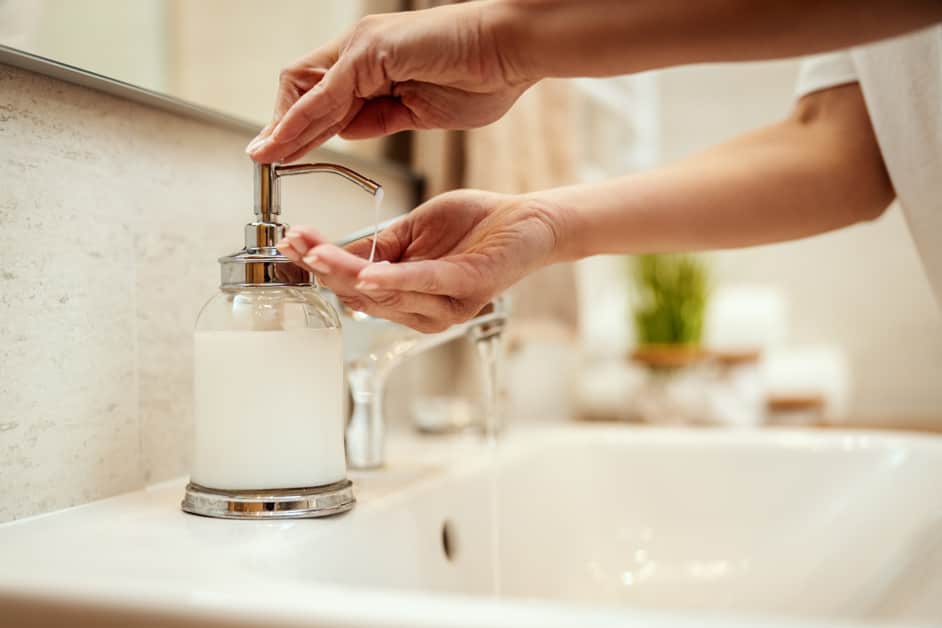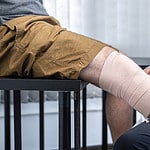Introduction
Knee infections can be painful and require treatment from a doctor. To reduce the chance of developing one, there are several simple methods. Keeping your skin healthy and treating any existing wounds is important. It’s also good to practice hygiene and take preventive steps when doing physical activity or when dealing with cuts or scrapes near the knee.
This guide will provide an overview of preventive techniques if you are at risk for knee infection. It will review:
- Common causes of skin infection
- Proper wound care
- Ways to prevent contamination in the knee area
It will also cover tips on recognizing an infection early, so prompt medical attention is sought. Taking these steps now can help protect yourself against serious problems from a neglected infection or wound involving your knees.
Causes of Knee Infections
Knee infections, also known as septic arthritis, can occur when bacteria, fungi, or other germs enter the knee joint. Causes include direct injury, a weakened immune system, surgery, infection in other body parts, and shared devices such as a needle.
Possible causes of knee infections? Let’s explore!
Bacteria
Bacteria and other microorganisms, such as fungal spores, can enter the knee joint and cause infection if its defenses are breached. These microbes may be present on the skin, in nasal passages or can enter through an open wound. Also, bacteria may enter the knee after trauma, like a cut or bite, without the person even knowing.
Common bacteria that can cause knee infections include Streptococci, Staphylococci (staph), and Escherichia coli (E. coli). Other bacteria that can cause serious infections, but are less common, are:
- Haemophilus influenzae
- Pseudomonas aeruginosa
- Klebsiella pneumoniae
- Mycobacterium tuberculosis
- Salmonella spp.
In some cases, bacteria that live harmlessly on the skin or inside the body may cause infection due to a weakened immune system or taking certain medications before a procedure. These infections are referred to as endogenous or opportunistic infections.
Fungi
Fungi cause many knee infections. They thrive in moist, warm places and can enter your wound if you go outside with wet or sweaty clothes. Ringworm, athlete’s foot and candida overgrowth are the most common fungal infections of the knee. These infections start small and grow, leading to knee pain and swelling.
Fungi love to live in damp fabrics, such as socks, stockings and swimsuits. If you are active outdoors, like playing sports or hiking through dense vegetation, your risk of getting a fungal infection from wet clothing is higher.
Fungi also come from contact with soil and other infected people, like open wounds and cuts. Don’t share items like clothing, towels or razors to avoid spreading bacteria.
Take proper hygiene steps to stop these infections:
- Shower after going outside
- Dry yourself off
- Change out of sweaty clothes quickly
- Wear protective footwear while hiking
- Trim nails short
- Avoid close contact with infected people
By following these steps, you can reduce your risk of getting a fungal infection in your knee area.
Viruses
Viruses are a cause of knee infections. These include the virus for chickenpox and shingles. Others, such as the flu, can be spread by contact with an infected person or a contaminated surface. Symptoms vary, but can include fever, joint pain and swelling, and redness at the infection site. Medication from a doctor can treat viral knee infections. Human Immunodeficiency Virus (HIV) can damage the immune system, making it easier to get infections.
Bacteria are another cause of knee infections. Bacteria can enter the body from dirt, animal waste, and skin-to-skin contact. Common bacterial infections include:
- Staph
- E.coli
- Salmonella
- Strep Throat
- TB
It’s important to get medical help right away, as bacterial infections can cause organ damage and sepsis.
Prevention Strategies
Knee infections, like septic arthritis, can be dangerous and hurt a lot if not treated. So, to stop knee infections, it is essential to know the signs, be clean, and use precautionary methods. This article tells you some easy techniques and strategies to help protect your knees from infections:
- Know the signs of a knee infection.
- Keep your knees clean.
- Use precautionary methods to protect your knees.
Proper Hygiene
Good hygiene is necessary to stop the spread of disease and infection. Everyday steps such as:
- washing hands regularly, especially after using the restroom;
- using hand sanitizer;
- covering sneezes and coughs with a tissue or elbow;
- avoiding contact with those who have an infectious disease; and
- not using someone else’s items,
can help protect from infection.
It is important to clean commonly used surfaces often to reduce germs. This includes door knobs, light switches, handlebars on public transportation, and other shared items. Additionally, it is essential to clean shared areas such as tables, desks, and countertops used for eating or preparing food.
When utensils, like dishes and cutlery, are shared by multiple people, they must be washed in hot soapy water before being used again, to avoid passing germs from one person to another.
Wearing Protective Gear
To prevent knee infections, use protective gear such as knee pads, elbow pads, and long pants. These clothes protect your skin and stop dirt and bacteria entering your body.
Wear water-resistant shoes when outdoors for long periods. This shields your feet and legs from dampness which can lead to infection. Clean cuts and scrapes with antiseptic cleaners to stop bacteria entering your body.
Knee braces also provide protection. They often help after surgery or with knee conditions. They support the joint and stop rubbing and friction that could cause open wounds where bacteria can enter.
Avoiding Contact with Contaminated Objects
Good hygiene and protective gear are essential for preventing knee infection. To reduce contact with contaminated objects, remember these tips:
- Wash hands properly before and after coming in contact with objects or surfaces.
- Disinfect surfaces that may have been exposed to infection sources.
- Wear gloves for handling potentially contaminated items. Change gloves often and between tasks.
- Steer clear of people with skin infections or infected wounds.
- Be aware when in public places, such as hospitals and parks, and look out for signs of contamination.
- Dispose of single-use items appropriately after use.
- Don’t share items of personal hygiene like razors or nail files.
Treatments for Knee Infections
Knees can get infections; ouch! Keeping them healthy and infection-free is super important. If you’re looking to prevent any knee infections, there are treatments and strategies. We’ll explore some of these!
Treatments and strategies to keep you healthy and safe from infections:
Antibiotics
Our immunologists may prescribe antibiotics to reduce inflammation and stop the infection from spreading. These antibiotics can be topical creams, ointments, or oral medications. However, if the knee pain remains, further evaluation may be needed.
Before giving antibiotics, our medical staff think about how serious the infection is. They also look at any potential interactions with other medicines, allergies to particular drugs, and if the patient should take over-the-counter drugs.
When the infection is very bad, we usually suggest high-dose intravenous (IV) therapy. This delivers the medication directly into the bloodstream quickly and effectively. It may be combined with lower dose oral antibiotics. This helps reduce side effects and encourages success in treating the infection.
Our medical team considers safety, effectiveness, convenience, and cost when choosing treatments. This allows us to make personalized care plans that meet each patient’s needs.
Surgery
Severe knee infections may require surgery. The type of surgery depends on the severity, medical history and age of the patient. Common surgeries used are arthroscopic debridement, open debridement, joint replacement and amputation.
- Arthroscopic debridement involves a small incision to reach the infected area. Instruments are used to remove damaged tissue or foreign objects.
- Open debridement involves surgically opening the affected area to clean out infected pus and debris. Antibiotics may be applied or the wound closed with sutures.
- Joint replacement surgery is used when bacteria have destroyed cartilage or an abscess has formed near a cartilage defect. The damaged cartilage is replaced by titanium prosthesis joints.
- In extreme cases, amputation may be recommended if sepsis or gangrene threatens the patient’s life.
Home Remedies
Dealing with a minor knee infection? Home remedies can help! Keep the knee clean and regularly apply warm compresses. This can reduce swelling, clean out bacteria, and give relief from pain. Over-the-counter meds like ibuprofen and pain relievers help reduce inflammation and aid the body’s healing process.
Also, try creams or ointments with anti-inflammatory properties. Topical hydrocortisone or mupirocin can reduce swelling. Dry brushing or scrubbing with a damp cloth can remove surface contaminants.
Warm compresses are a great way to increase circulation, reduce swelling, and kill bacteria. Plus, elevation above the heart can reduce inflammation in the joint.
These strategies can treat minor knee infections without costly med visits. But if symptoms persist, seek professional medical care for diagnosis and treatment.
Conclusion
In conclusion, knee infections can be avoided easily. Keep knees clean and practice good hygiene. Wear protective clothing and use special braces or supports when needed. Cut down activity, wear the right shoes, try physical therapy, or a combo of them. This helps reduce joint stress and lessen potential risks for knee infection.
Regular check-ups with your doctor or physical therapist, and acting quickly if infection signs appear, are important for keeping a healthy knee. Follow these steps and you will live an active, worry-free life.
- Keep knees clean and practice good hygiene.
- Wear protective clothing and use special braces or supports when needed.
- Cut down activity, wear the right shoes, try physical therapy, or a combo of them.
- Regular check-ups with your doctor or physical therapist.
- Act quickly if infection signs appear.
Frequently Asked Questions
Q: How can I avoid getting a knee infection?
A: To reduce the risk of getting a knee infection, it is important to practice good hygiene and take steps to prevent open wounds or abrasions on the knee. Additionally, it is recommended to keep the knee clean and dry, and to wear appropriate clothing and footwear to protect the knee from injury.
Q: What are some simple techniques to prevent knee infections?
A: Some simple techniques to prevent knee infections include washing the knee regularly with soap and water, avoiding activities that could cause abrasions or open wounds on the knee, and wearing appropriate clothing and footwear to protect the knee from injury. Additionally, it is important to keep the knee dry and clean, and to avoid contact with contaminated surfaces.
Q: What strategies can I use to reduce the risk of getting a knee infection?
A: To reduce the risk of getting a knee infection, it is important to practice good hygiene and take steps to prevent open wounds or abrasions on the knee. Additionally, it is important to keep the knee clean and dry, and to wear appropriate clothing and footwear to protect the knee from injury. It is also recommended to avoid contact with contaminated surfaces, to avoid activities that could cause abrasions or open wounds on the knee, and to wash the knee regularly with soap and water.





